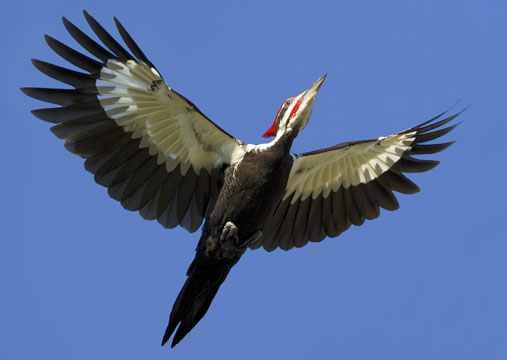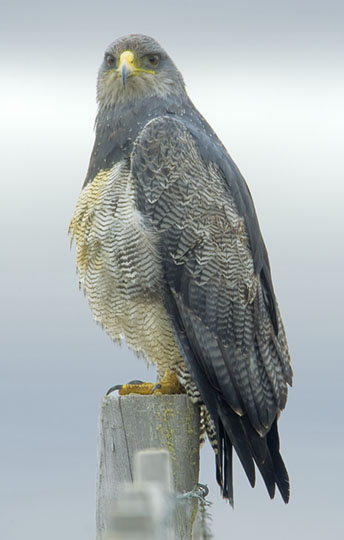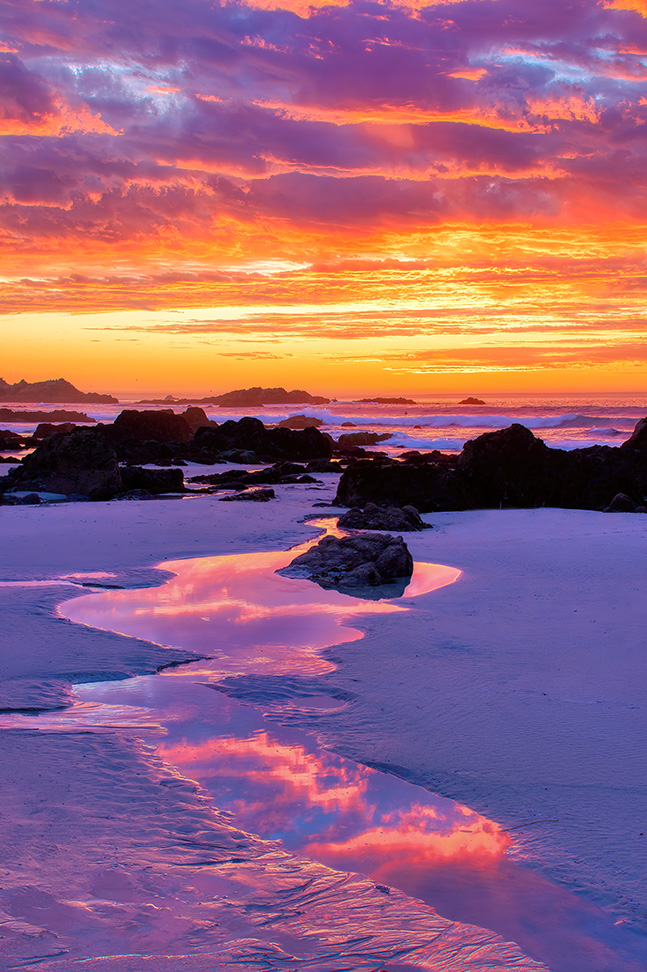 |
 |
 Pileated woodpecker (Florida)
Pileated woodpecker (Florida)Canon 1D3, 800 mm IS |  surfbirds and black turnstones (California) Canon 1D mk. II, 500 mm IS |

Black-chested buzzard-eagle (Chile) Canon 1D3, 500 mm IS + 1.4X

Beach sunset (California) Canon R5, RF 24-105 mm F4 |
A few lens recommendations
Many photographers tend to drift into evangelistic gearheadism: Nikon vs. Canon vs. Sony, Leica vs. everything else, and so on. Realistically, cameras and lenses are just tools, and the photographer's vision and skill are much more important. That said, the next most critical factor for good images is the lens. Creative people get superb shots with modest optics: see Judd Patterson's site; many of his lovely photographs were with made with a 300 mm lens (plus a lot of skill and dedication). However, for the majority of wildlife work, life is easier with big telephotos. The longer they are, the greater the working distance and the less likely you are to alarm your subjects - but the challenges of weight and cost can be intimidating. Serious bird photographers often use 600mm f4 lenses. These are huge and expensive; 400 or 500 mm are more practical focal lengths, and if I could have only one wildlife lens, it would be the Canon 500 mm IS Mk. II. Caveat: I very much like the Canon EF 800 mm IS, but it is smaller than most 600 mm f4s. Another caveat: Canon has introduced updated models of its 500 and 600 f4 IS lenses that are substantially lighter -- and costlier -- than the original versions. Even newer caveat: the new RF versions for mirrorless cameras are even lighter and (for the 800mm) even more expensive. DSLRs -- and now, mirrorless cameras -- come and go on a product cycle of a few years, and all current models are capable of excellent results. Now more than ever, lenses are the critical hardware determinants of image quality (the wetware between the photographer's ears remains more important, of course). With that in mind, here are some comments about lenses (and other photo gear) I'm familiar with:
|
